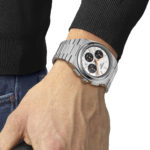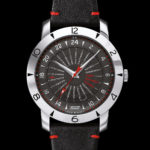Tissot Introduces the Sideral
A colourful piece from the 70s reimagined.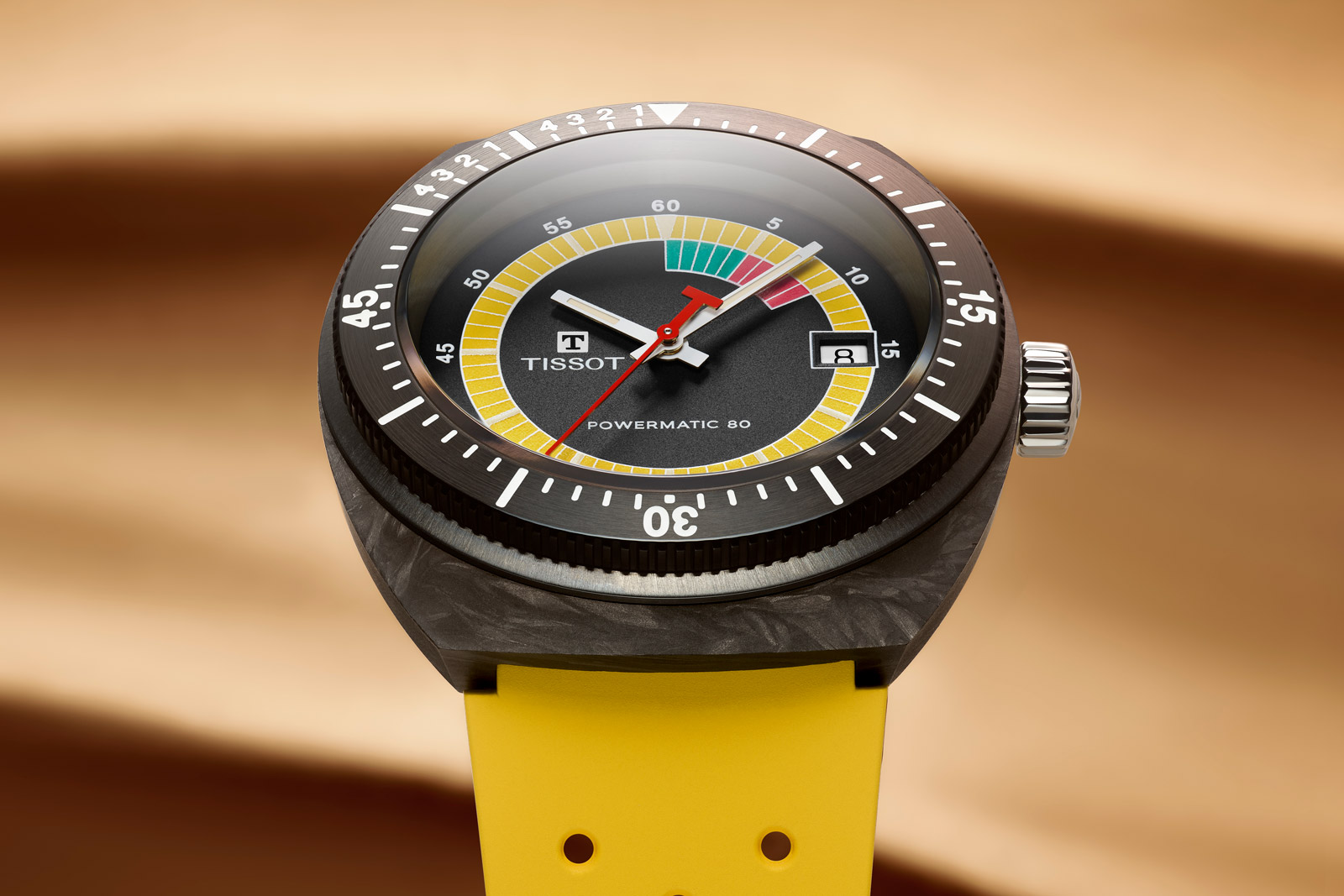
Fun, affordable, and well-equipped, the Sideral is a surprisingly interesting entry-level sports watch from Tissot. Where many recent sports watches been Genta-inspired with integrated bracelets – Tissot’s own PRX among them – the Sideral reminds us that the 70s were a time of broader experimentation for the Swiss watch industry, in terms of both design and materials.
Based on the playful and quirky Sideral S from 1971, the newSideral is not a one-to-one remake of the original. Instead, it’s been smartly updated in both design and functionality. While the original Sideral S featured a fiberglass case, then a world first, the reissue has a more contemporary carbon composite case. With its clever use of lume plus a regatta countdown bezel, the Sideral packs a surprising amount of character for the price.
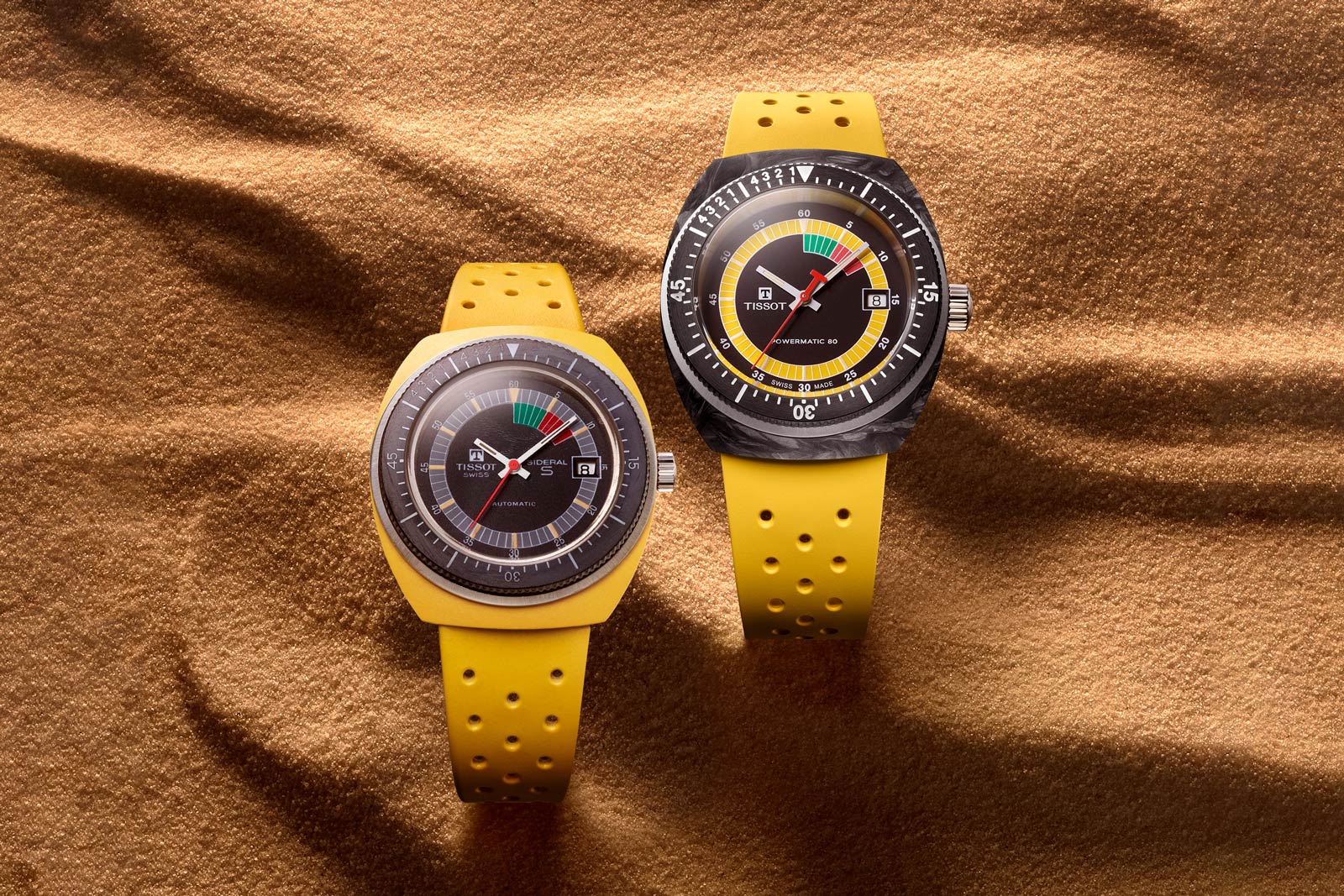
The original Sideral S from 1971 (lower left) next to the new Sideral.
Initial thoughts
Heritage remakes have become a common trope in the luxury watch industry over the past few years, but brands have mostly focused on bringing back their most timeless and iconic designs from the 1950s and 1960s; the Tudor Black Bay 54 is a perfect example. In this context, the launch of the funky Sideral is a breath of fresh air, since the original design is comparatively obscure and likely unknown to many contemporary enthusiasts.
The dial itself is generously and playfully lumed, with four different colours of Super-LumiNova across the collection to bring it to life in the dark. The period-correct Tissot logo is a welcome touch as it enhances the cohesiveness of the design.
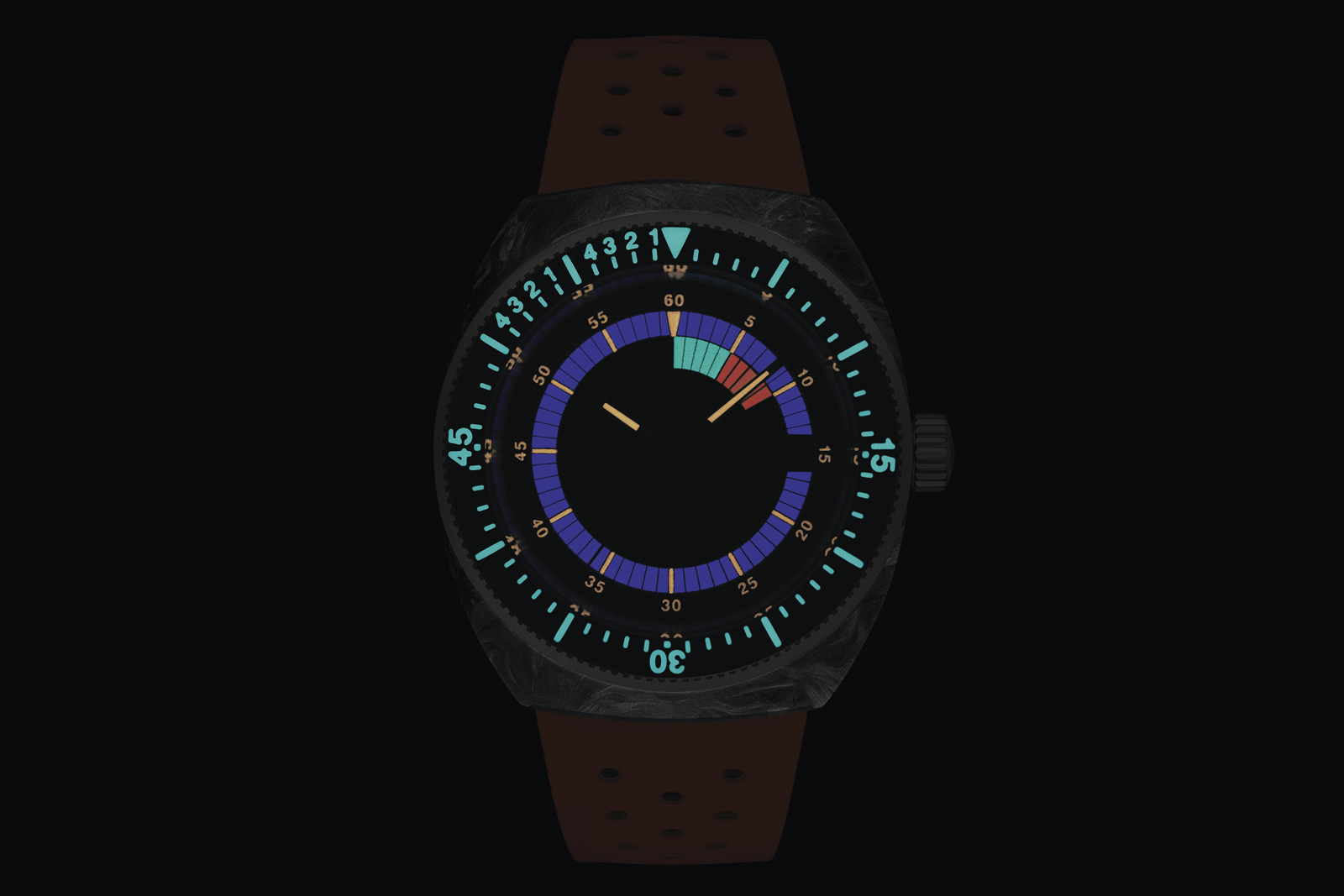
With its fully lumed bezel and numerous shades of Super-LumiNova on the dial, the Sideral comes alive in the dark.
Priced at US$995, the Sideral is a lot of watch for the money. In fact, it’s hard to think of another watch that offers such thoughtful design with a quality stock calibre. The value proposition is enhanced by the use of the Powermatic 80 movement, which differentiates the Sideral from watches like the Gorilla Fastback Carbon, which is slightly cheaper but relies on a more generic Miyota movement.
A strapping design
A signature element of the Sideral is its distinctive perforated rubber strap, which features an integrated buckle. Similar in concept to the strap of an Apple Watch, the design is actually original to Tissot, and was first used by the original fiberglass Sideral introduced in 1969.
Unlike the strap on the Apple Watch, the Sideral’s strap connects to the case using typical quick-change spring bars, meaning third party straps could also be used here. At launch, the Sideral is available with red, yellow, or blue straps, but buyers will have the option of buying additional straps in black, green, and orange.
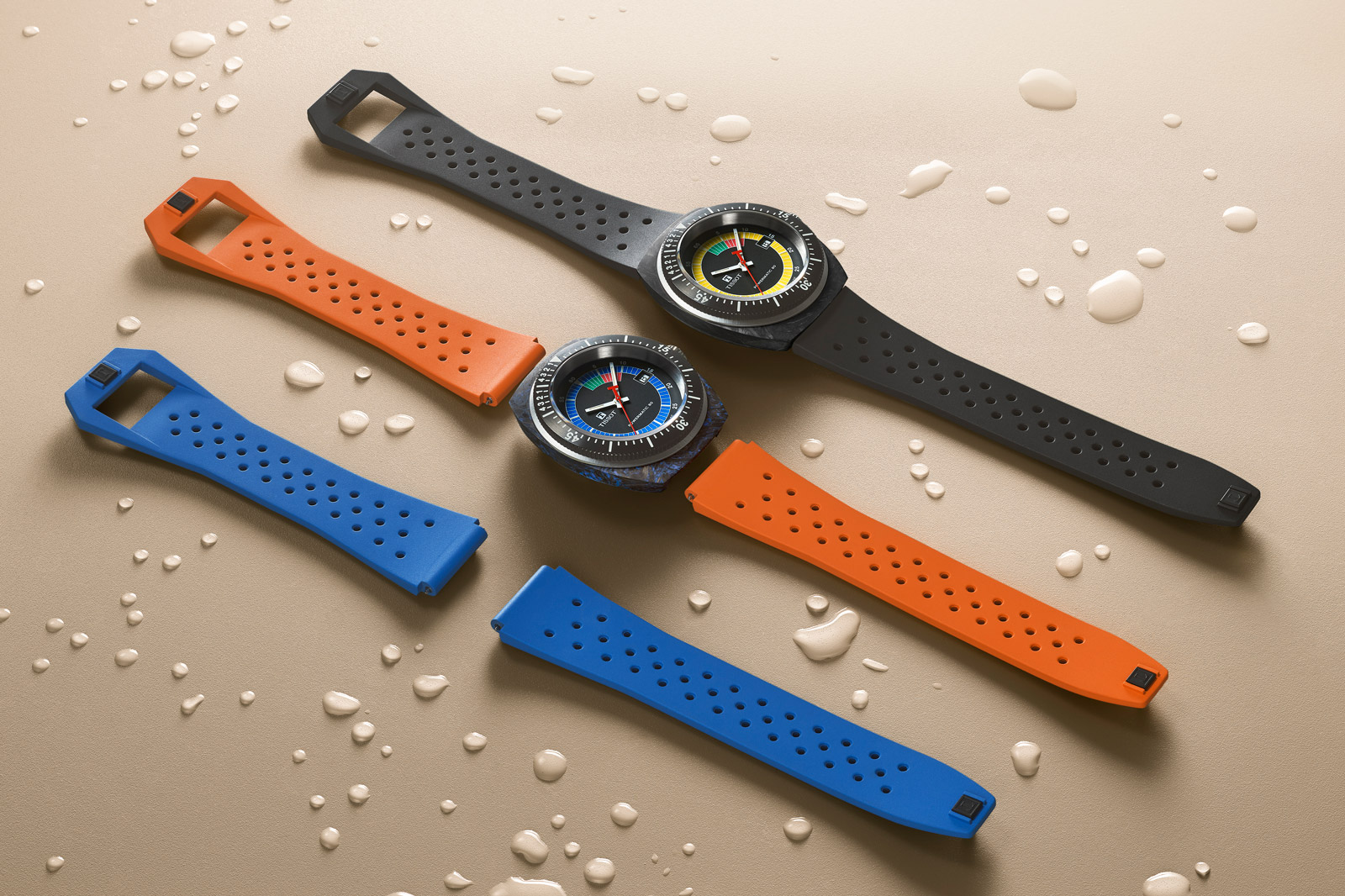
Additional straps are available from Tissot.
That said, the strap choice does dictate the colours used elsewhere on the watch. With its plain black case and grey chapter ring, the red version is probably the most versatile reference when it comes to adding different strap colours. In contrast, the yellow version features a matching chapter ring; ditto on the blue version. Interestingly, the blue version takes things even further with blue elements forged into the carbon case.
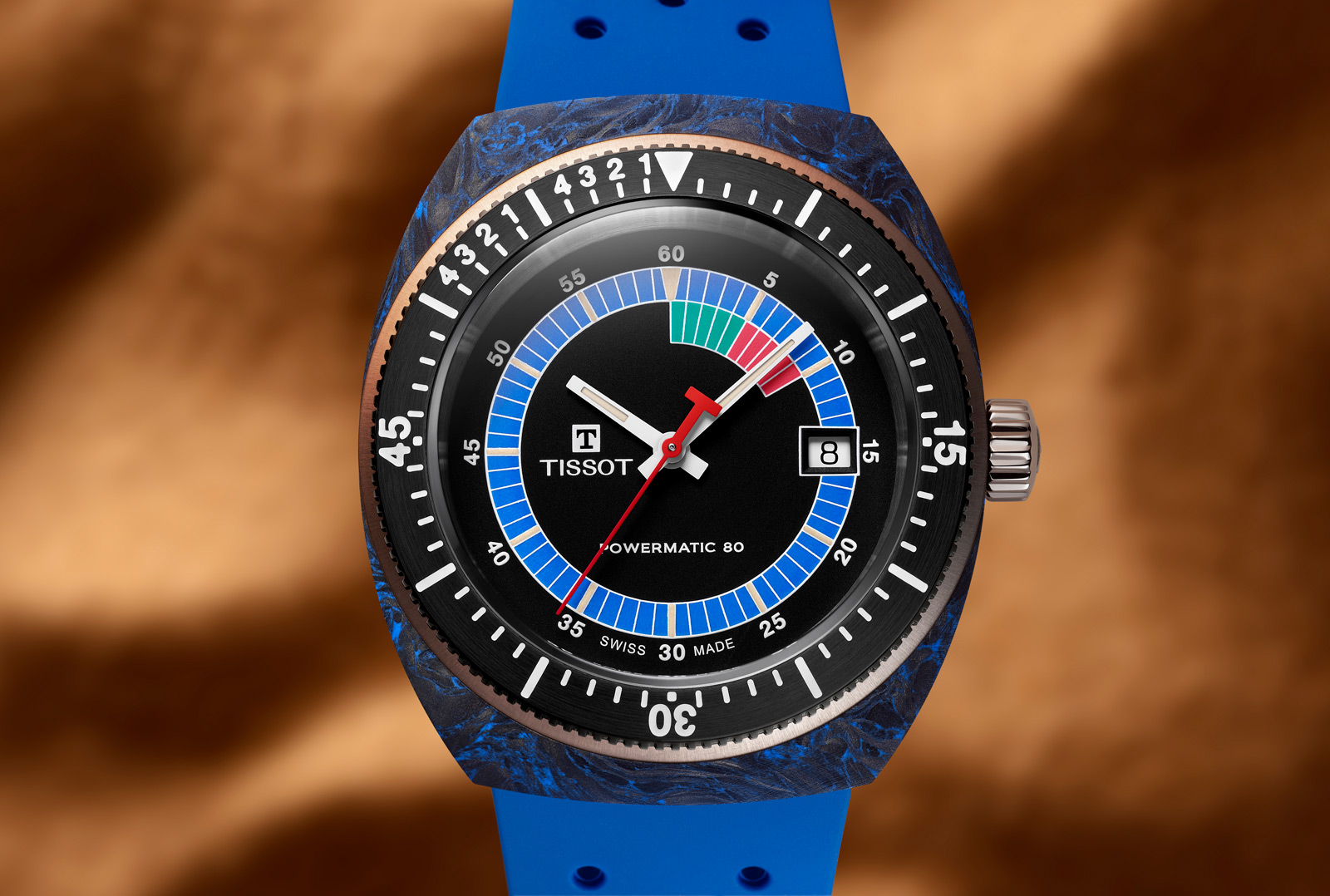
The blue version of the Sideral features not only a blue chapter ring on the dial, but also includes blue elements in the carbon composite case.
Beyond its bright colours, the Sideral features a 41 mm case made almost entirely of lightweight carbon composite, while the crown and caseback are made of stainless steel. The unidirectional bezel, which is slightly smaller than the case at 39 mm, offers a five-minute regatta countdown function in addition to the typical 60-minute scale. Notably, the bezel is fully lumed, which is a nice surprise and quite unusual at this price point.
A familiar movement
Like many of its entry-level Swatch Group stablemates, the Sideral features the Powermatic 80 movement, known internally as the ETA C07. Based on the ETA 2824, the Powermatic 80 offers several notable improvements, including a free-sprung balance.
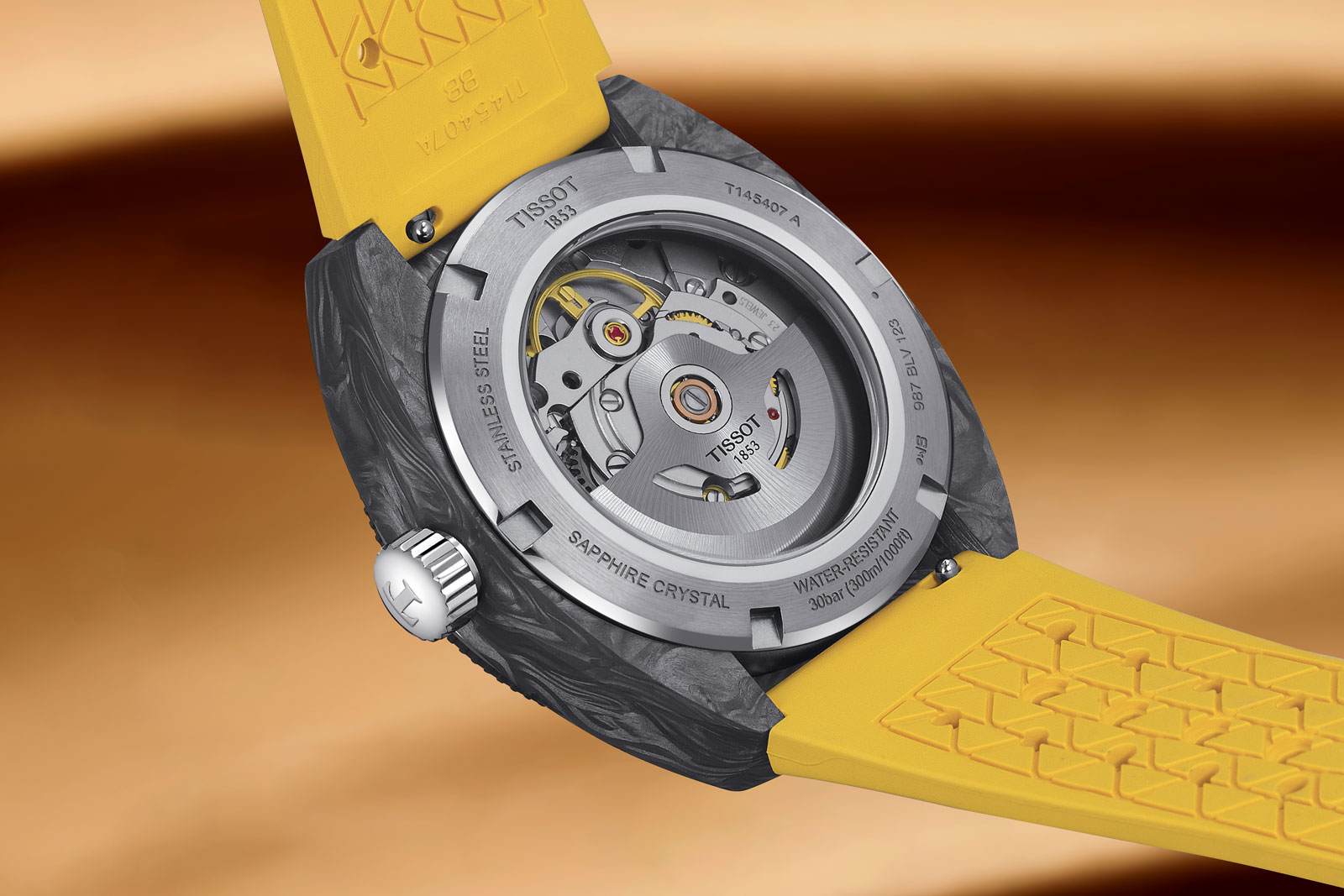
The Powermatic 80 movement is visible through a sapphire crystal case back. The movement is largely undecorated, but that’s reasonable at this price. Note the quick-release spring bars.
Naturally, the most tangible upgrade is the namesake 80-hour power reserve, which is roughly double that of a standard cal. 2824. These gains can be attributed in part to the slower 3 Hz beat rate. The Powermatic 80 is also antimagnetic, featuring synthetic polymer escapement components and a Nivachron hairspring, which though metallic, is said to be substantially more resistant to the effects of magnetism than traditional alloys.
As expected at this price point, the movement is largely undecorated. That said, I do find the radial brushing on the rotor to be a step up from the busier design found in the PRX.
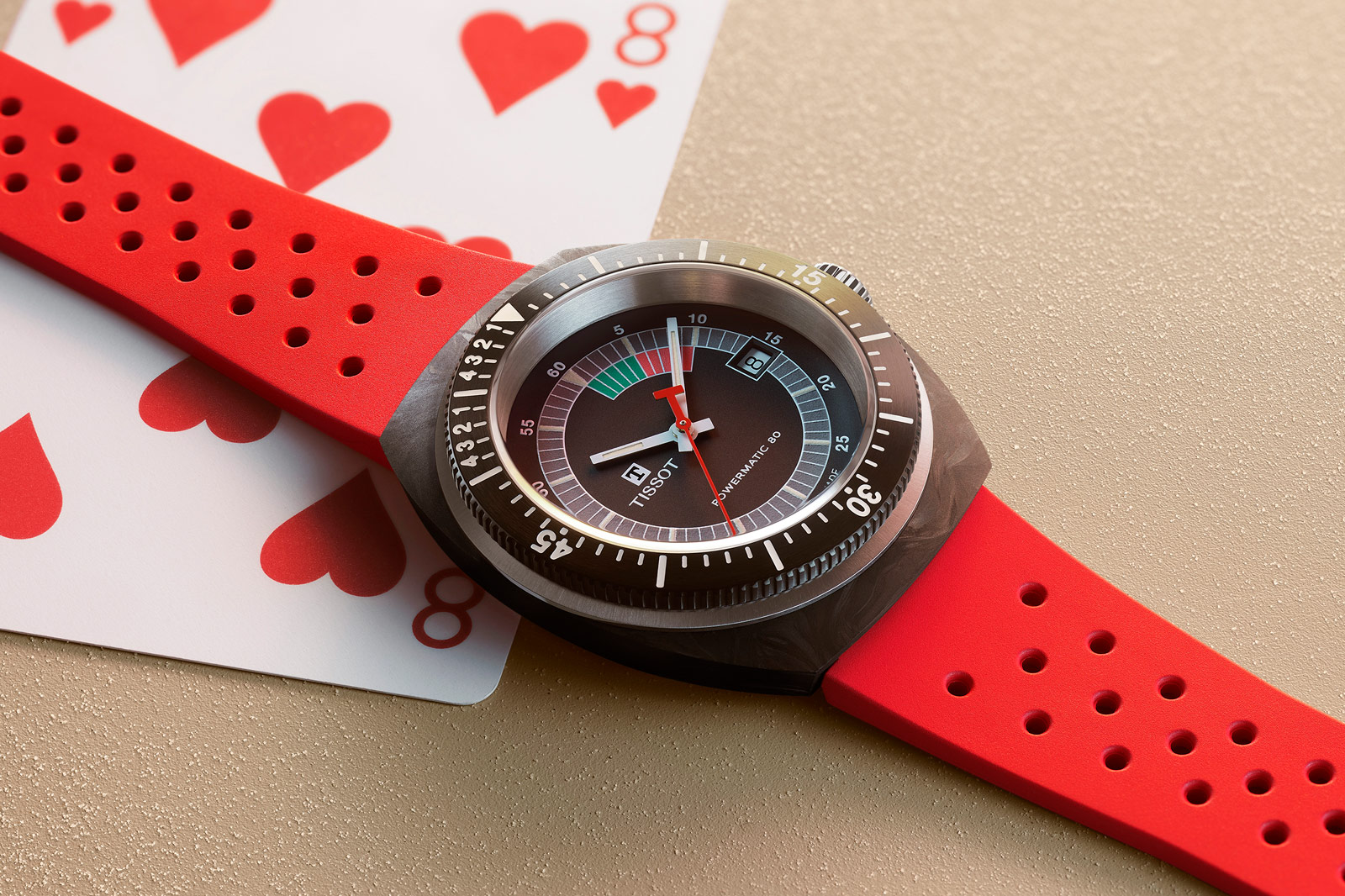
The red version of the Sideral features a dial with a grey chapter ring, making it the most versatile of the three options when it comes to adding different coloured straps.
Key facts and price
Tissot Sideral
Ref. T145.407.97.057.00 (Yellow)
Ref. T145.407.97.057.01 (Blue)
Ref. T145.407.97.057.02 (Red)
Diameter: 41 mm
Material: Carbon composite and stainless steel
Crystal: Sapphire
Water resistance: 300 m
Movement: Powermatic 80
Features: Hours, minutes, seconds, date
Frequency: 21,600 beats per hour (3.5 Hz)
Winding: Automatic
Power reserve: 80 hours
Strap: Rubber
Limited edition: No
Availability: Available now from Tissot retailers and directly from Tissot online
Price: US$995
Price exclude local taxes
For more, visit tissot.com.
Back to top.

